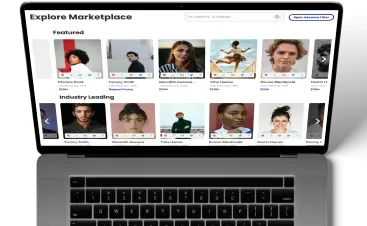What Are Brand Collaborations?
Brand collaborations are strategic partnerships between two or more brands to create joint marketing campaigns, products, or initiatives. These collaborations aim to leverage each brand’s strengths, audiences, and resources to achieve mutual benefits such as increased brand awareness, expanded reach, and enhanced credibility.
Essential Components of Successful Brand Collaborations
- Mutual Goals and Objectives: Both brands align on shared goals such as increasing brand awareness, launching a new product, entering a new market, or enhancing brand image.
- Complementary Strengths: The collaborating brands bring complementary strengths to the partnership, such as different audiences, unique expertise, or distinctive brand identities.
- Co-Branding and Co-Marketing: Brands create joint marketing campaigns or co-branded products incorporating elements from both brands. This can include shared advertising, social media campaigns, and promotional events.
- Audience Synergy: Collaborations are most effective when the target audiences of both brands overlap or complement each other, allowing for cross-promotion and increased reach.
- Innovative Concepts: Successful brand collaborations often involve innovative ideas or unique product offerings that stand out in the market and attract attention from both brands’ audiences.
Types of Brand Collaborations
- Product Collaborations: Creating a co-branded product that combines the expertise and styles of both brands. Examples include limited-edition products, exclusive collections, or unique packaging.
- Marketing Campaigns: Joint marketing initiatives such as social media campaigns, email marketing, and advertising that feature both brands prominently. These campaigns can include shared content, hashtags, and promotional events.
- Event Collaborations involve partnering on events such as pop-up shops, trade shows, webinars, or experiential marketing events. These events allow brands to engage with their audiences in a shared space.
- Content Collaborations: Produce co-branded content such as blog posts, videos, podcasts, or social media posts that highlight the partnership and offer value to both brand’s audiences.
- Influencer Collaborations: Engaging influencers who can promote collaboration with their followers can amplify the partnership’s reach and impact.
Examples of Brand Collaborations
- Supreme x The North Face: This collaboration merges streetwear with high-performance outdoor gear. The partnership has resulted in highly sought-after limited-edition collections that appeal to both brand’s audiences.
- LEGO x IKEA: The two brands teamed up to create BYGGLEK, a series of storage boxes that double as play spaces for LEGO bricks. This collaboration merges IIKEA’s functional home design with LLEGO’s creativity.
- Adidas x BBeyoncé’ sIvy Park: Adidas collaborated with BBeyoncé’s activewear line, Ivy Park, to create stylish and functional athletic wear. This partnership leverages BBeyoncé’sinfluence and AAdidas’ssportswear expertise.
- Fenty Beauty x Savage X Fenty: RRihanna’sbeauty and lingerie brands frequently cross-promote and collaborate on campaigns emphasizing body positivity and inclusivity, appealing to a broad audience.
- Nike x Sacai: Nike teamed up with Japanese luxury brand Sacai to create unique, fashion-forward sneaker designs. This collaboration bridges high fashion and athletic wear, creating a buzz in both industries.
- McDonald x Travis Scott: McDonald’s partnered with rapper Travis Scott for a limited-edition meal and merchandise line. This collaboration tapped into Travis’s massive fanbase, generating significant social media buzz and sales.
- Coca-Cola x BTS: Coca-Cola collaborated with the global K-pop sensation BTS for various marketing campaigns, leveraging BBTS’s immense global following to enhance brand visibility and engagement.
- Balmain x Puma: Luxury fashion house Balmain and sportswear giant Puma collaborated on a collection that blends high fashion with athletic wear, appealing to fans of both brands.
- Taco Bell x Doritos: The Doritos Locos Tacos collaboration has continued to be successful. By merging Taco BBell’smenu with the popular Doritos snack, the two brands create a unique product that drives interest and sales.
These examples showcase contemporary partnerships that effectively combine the strengths of each brand to create innovative products and campaigns, appealing to diverse audiences and achieving significant market impact.
Strategies for Effective Brand Collaborations
- Identify Compatible Partners: Choose brands with similar values, target audiences, and objectives. Compatibility is critical to a successful partnership.
- Define Clear Objectives: Establish clear and mutual goals for the collaboration. Both brands should understand what they aim to achieve.
- Develop a Unified Strategy: Create a cohesive strategy that outlines the brand’s roles, responsibilities, and contributions. Ensure the campaign or product seamlessly integrates both brands.
- Maintain Open Communication: Effective communication is crucial throughout the collaboration process. Regular check-ins and transparency can prevent misunderstandings and ensure alignment.
- Measure and Analyze Results: Track collaboration’s performance using relevant metrics. Analyze the results to understand the impact and identify areas for improvement in future partnerships.
In summary, brand collaborations are powerful strategies that allow brands to pool their resources, audiences, and expertise to create mutually beneficial marketing initiatives. By carefully selecting partners and crafting innovative, integrated campaigns, brands can achieve greater reach, credibility, and success.
Check out some other terms you may encounter in the Creator economy here.








